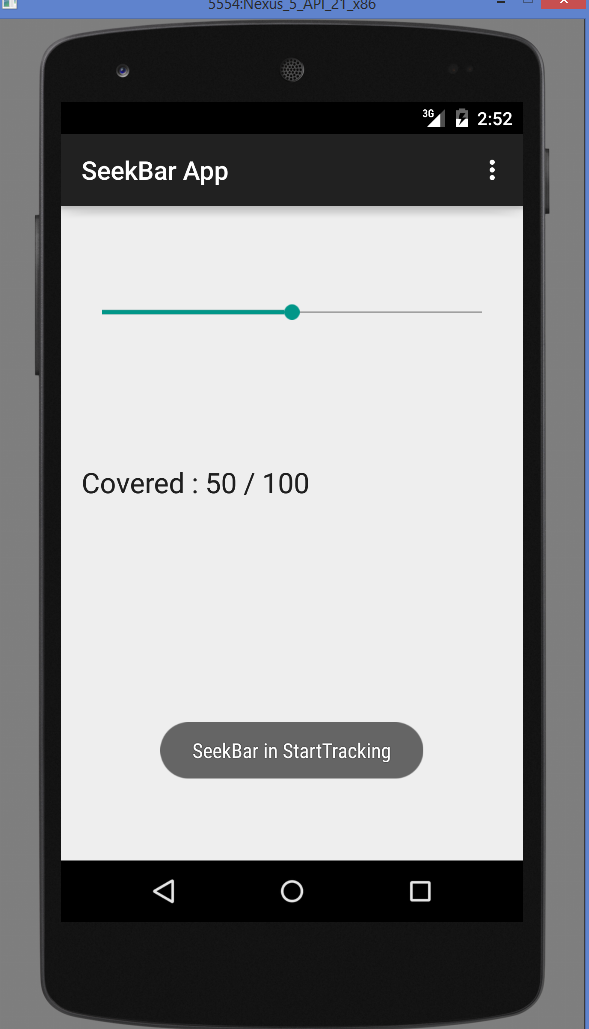

- Android studio tutorial 2016 for android#
- Android studio tutorial 2016 android#
- Android studio tutorial 2016 software#
Template-based wizards to create common Android designs and components. ProGuard integration and app signing capabilities.  Lint tools to catch performance, usability, version compatibility, and other problems. Android-specific refactoring and quick fixes. Media: Music can be played from other devices connected to the phone. Privacy and security: Android 11 gives more security and privacy fixes to smartphones straight from Google Play. Predictive tools: by predicting the habits and patterns of working, it suggests accordingly. The first Android version which was released in numeric order format was Android 10.Īndroid version 2.3 to 2.3.7: GingerbreadĪndroid version 4.0 to 4.0.4: Ice Cream SandwichĪndroid version 6.0 to 6.0.1: MarshmallowĬonversations: put all the messages in one place.Īccessibility: perspective apps help us to control and navigate the phone using voice commands.ĭevice controls: Android 11 allows the user to control all the connected devices (IoT) from a single point.Ĭontent capture: Android 11 comes with a screen recording feature that captures the phone’s current screen activity. The very first android mobile was released with Android version 1.0 of the T-Mobile, which is HTC Dream. OnDestroy: it is called when the activity is destroyed. OnRestart: it is called when the activity is stopped, before the start. OnStop: it is called when the activity is no longer visible to the user. OnPause: it is called when the activity is not visible to the user. OnResume: it is called when the activity will start interacting with the user. OnStart: it is called when the activity is becoming visible to the users. OnCreate: it is called when activity is first created. These 7 lifecycle methods of activity describe how the activity will behave at different states. With the help of this activity, developers can place all the user interface components or widgets on a single screen. It is more like a window or frame of Java. The android Activity is the subclass of ContextThemeWrapper class.Īctivity is a single screen in android.
Lint tools to catch performance, usability, version compatibility, and other problems. Android-specific refactoring and quick fixes. Media: Music can be played from other devices connected to the phone. Privacy and security: Android 11 gives more security and privacy fixes to smartphones straight from Google Play. Predictive tools: by predicting the habits and patterns of working, it suggests accordingly. The first Android version which was released in numeric order format was Android 10.Īndroid version 2.3 to 2.3.7: GingerbreadĪndroid version 4.0 to 4.0.4: Ice Cream SandwichĪndroid version 6.0 to 6.0.1: MarshmallowĬonversations: put all the messages in one place.Īccessibility: perspective apps help us to control and navigate the phone using voice commands.ĭevice controls: Android 11 allows the user to control all the connected devices (IoT) from a single point.Ĭontent capture: Android 11 comes with a screen recording feature that captures the phone’s current screen activity. The very first android mobile was released with Android version 1.0 of the T-Mobile, which is HTC Dream. OnDestroy: it is called when the activity is destroyed. OnRestart: it is called when the activity is stopped, before the start. OnStop: it is called when the activity is no longer visible to the user. OnPause: it is called when the activity is not visible to the user. OnResume: it is called when the activity will start interacting with the user. OnStart: it is called when the activity is becoming visible to the users. OnCreate: it is called when activity is first created. These 7 lifecycle methods of activity describe how the activity will behave at different states. With the help of this activity, developers can place all the user interface components or widgets on a single screen. It is more like a window or frame of Java. The android Activity is the subclass of ContextThemeWrapper class.Īctivity is a single screen in android. 
app.Activity class control android activity lifecycle. Android runtime and native libraries use Linux kernel. All the applications such as contact, home, games, settings, and browsers are using the android framework that uses android runtime and libraries. Applications: There are applications that are placed on top of the Android framework.
Android studio tutorial 2016 for android#
It also provides a lot of classes and interfaces for android application development. Android framework includes Android APIs such as UI (User Interface), resources, telephony, locations, package managers, and content providers (data).
Android Framework: Android framework is placed on top of native libraries and android runtime. It consumes less memory and provides fast performance. DVM is like JVM, but it is optimized for mobile devices. Android Runtime: There are core libraries and DVM (Dalvik Virtual Machine) which is responsible for running android applications in android runtime. The WebKit library is responsible for browser support SQLite is used for maintaining databases FreeType is used for font support Media for playing and recording audio and video formats. Native Libraries (middleware): WebKit, OpenGL, FreeType, SQLite, Media, C runtime library (libs), etc are examples of Native libraries. Linux kernel is responsible for power management, device management, resource access, and device drivers. It exists at the root of android architecture. Linux kernel: It is considered the heart of android architecture. Android studio tutorial 2016 software#
Java language is mainly used to write the android code even though other languages can be used.Īndroid software stacks are divided into 5 parts: The main goal of the android project is to create a successful real-world product that improves the mobile experience for end-users. Android Studio is a tool that enables work on android development, a software project, and Linux based operating system for mobile devices such as tablet computers and smartphones.







 0 kommentar(er)
0 kommentar(er)
